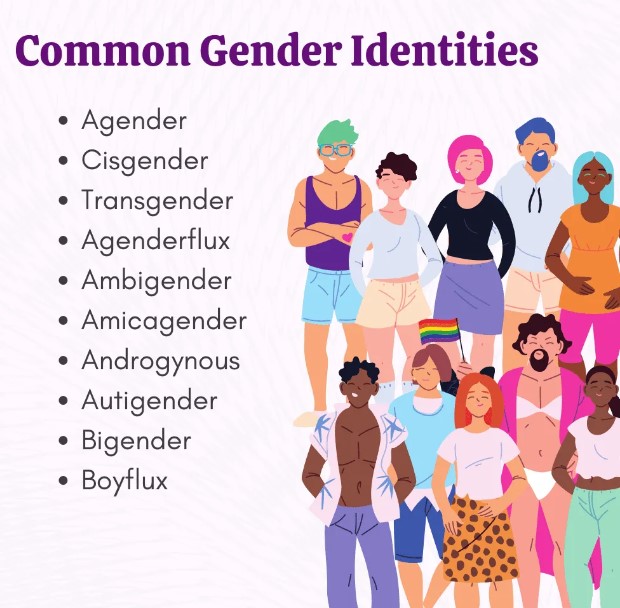BOURSESSENEGAL – In today’s society, the question “how many genders are there?” invites a complex discussion that transcends traditional views. People increasingly recognize that gender is not merely a binary concept. Instead, it encompasses a spectrum of identities that reflect individual experiences and cultural influences. In this blog post, we will explore the various genders, cultural perspectives, and the importance of inclusivity in understanding gender diversity.
What Is Gender?
To address how many genders there are, we first need to define gender itself. Gender refers to the roles, behaviors, and expectations that society associates with being male, female, or other identities. Traditionally, many societies have operated under a binary view of gender, categorizing individuals strictly as male or female based on their biological sex. However, this perspective fails to account for the nuanced experiences of many individuals.
Gender vs. Sex
It’s crucial to differentiate between gender and sex. While sex refers to the biological attributes that define humans as male or female, gender is a social construct that varies across cultures and can change over time. This distinction helps us understand why the question of how many genders exist does not have a straightforward answer.
The Spectrum of Gender Identities
Understanding gender as a spectrum allows for a more inclusive approach. Here are some of the identities that fall outside the traditional binary:
1. Non-Binary
Non-binary individuals do not identify exclusively as male or female. They may feel like a mix of both, neither, or a different gender altogether. This identity reflects a broad range of gender experiences.
2. Genderqueer
Genderqueer is another umbrella term for individuals who reject traditional gender distinctions. They may identify with elements of both genders or create their unique identity.
3. Genderfluid
Genderfluid people experience a dynamic sense of their gender identity. Their identity can shift over time, depending on various factors, including their environment and feelings.
4. Agender
Agender individuals identify as having no gender. They may not feel a connection to any gender and prefer to exist outside traditional gender classifications.
5. Bigender
Bigender individuals identify as having two genders, either simultaneously or at different times. This can include identifying as both male and female or as a different combination of genders.
6. Two-Spirit
In many Indigenous cultures, Two-Spirit is a term that describes a person who embodies both masculine and feminine qualities. This identity has deep cultural roots and reflects the complex understanding of gender within those communities.
Cultural Perspectives on Gender
Many cultures recognize more than two genders, emphasizing that the concept of gender is not universal. For example:
Hijra
In South Asia, Hijras are recognized as a third gender. They have a unique cultural and social role, often serving as blessings at births and weddings.
Fa’afafine
In Samoa, Fa’afafine refers to people who identify as a gender different from their biological sex. They play a vital role in their communities and are accepted in their culture.
Kathoey
In Thailand, Kathoey, often referred to as “ladyboys,” are transgender women or effeminate gay men who hold a significant place in Thai society.
The Importance of Inclusivity
Understanding how many genders there are is more than an academic exercise. It impacts real lives. Inclusivity is essential for fostering a supportive environment for individuals of all gender identities. Here are a few reasons why it matters:
1. Validation of Identity
When society acknowledges a spectrum of genders, it validates the experiences and identities of individuals. This recognition fosters a sense of belonging and acceptance.
2. Mental Health
Studies show that individuals who identify outside traditional gender norms often face higher rates of anxiety and depression. Acceptance and support can improve mental well-being significantly.
3. Breaking Down Stereotypes
Understanding gender diversity helps dismantle harmful stereotypes associated with traditional gender roles. This creates a more equitable society where individuals can express themselves freely.
4. Better Policies
Inclusive policies in workplaces, schools, and healthcare settings are crucial for supporting individuals of all gender identities. By recognizing the diversity of genders, we can create environments that accommodate everyone’s needs.
How to Support Gender Diversity
Supporting gender diversity begins with education and awareness. Here are some ways you can make a difference:
1. Educate Yourself
Understanding the terminology and the spectrum of gender identities is the first step. The more informed you are, the better equipped you will be to engage in conversations about gender.
2. Respect Pronouns
Using correct pronouns is a simple yet impactful way to show respect for someone’s gender identity. If you’re unsure, don’t hesitate to ask.
3. Create Inclusive Spaces
Whether at work or in social settings, strive to create environments where everyone feels comfortable expressing their gender identity. This could involve inclusive language, policies, or even training programs.
4. Stand Against Discrimination
Advocate for equal rights and opportunities for all individuals, regardless of their gender identity. Supporting legislation that protects against discrimination is vital.
Conclusion
So, how many genders are there? The answer is not as simple as it may seem. Gender exists on a spectrum, encompassing a diverse array of identities that reflect personal and cultural experiences. By acknowledging this complexity, we foster a more inclusive society that values all individuals for who they truly are. Understanding gender diversity is not just about numbers; it’s about recognizing the rich tapestry of human experience. Let’s embrace that diversity and work toward a world where everyone feels seen, respected, and valued.
REFERENCE : https://www.cdcfoundation.org/



